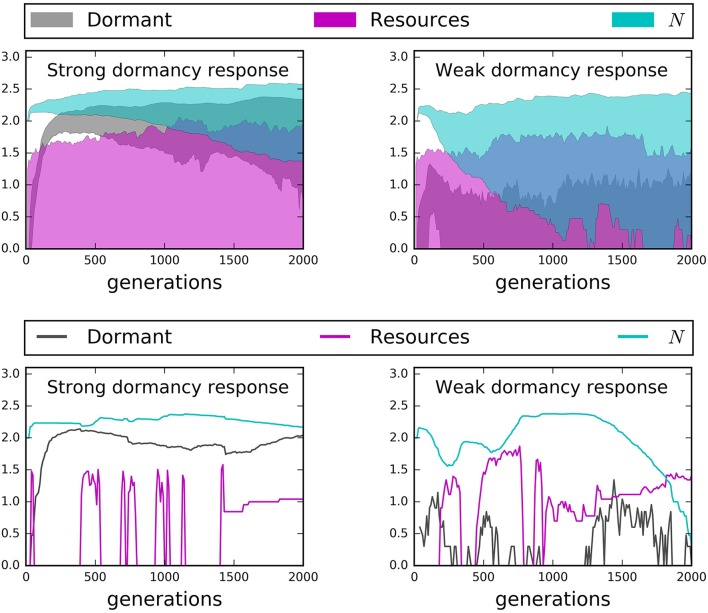Figure 8.
Time series results from models with a strong dormancy response (dormancy decreases maintenance energy by a factor of 100, probability of random resuscitation = 0.001) and a weak dormancy response (dormancy decreases maintenance energy by a factor of 10, probability of random resuscitation = 0.1). Top row: 95% confidence hulls reveal that a strong dormancy response almost always prevents extinction while a weak dormancy response leads to greater activity but not necessarily greater total abundance (N). Bottom row: A random selection of two models. (Left) A strong dormancy response leads to a more stable N, despite high variability in or absence of total resources (R). (Right) A weak dormancy response can lead to extinction, even in the presence of increasing resources.

